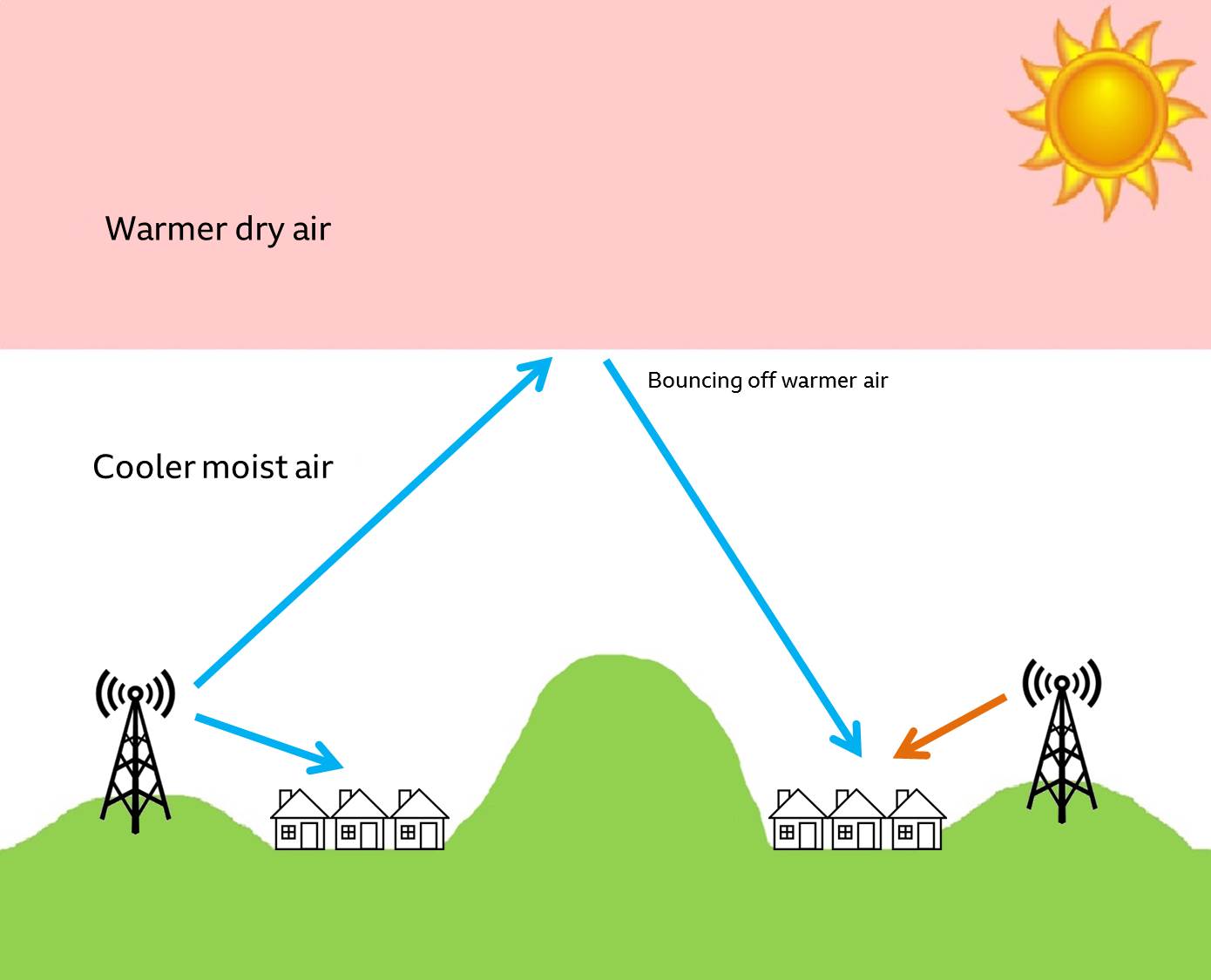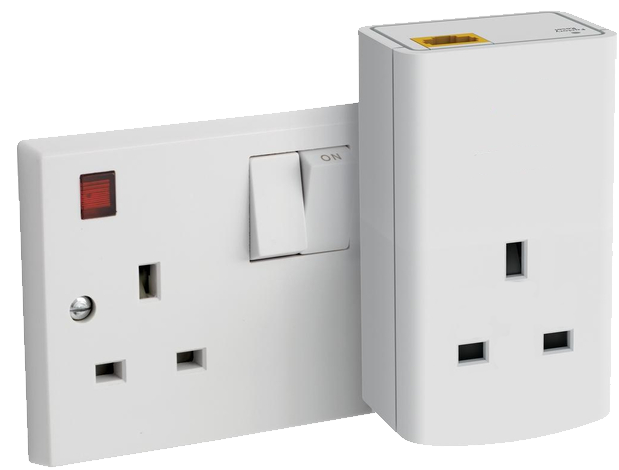The television transmitter network is engineered to a very high level, so impacts due to the weather are rare. However, there will be occasions when certain weather conditions allow the signals carrying television services to travel further than normal. This can cause cause problems such as pixelation.
When these conditions occur, there is nothing that can be done but wait until the weather system has moved on.
Effect of Weather on Reception
The UK television transmitter networks are engineered to a very high level, so impacts due to the weather are rare. However, as there are a limited number of frequencies to broadcast television services, we need to re-use them numerous times across the UK. When certain weather conditions occur, they allow the signals carrying television services to travel further than expected. Therefore at these times, you can then receive different television services that are using the same frequency.
Normally, the signals from each transmitter can only be received by those homes that have aerials with a direct line-of-sight to the transmitter. Being able to receive more than one signal using the same frequency can cause problems such as pixelation. This is known as co-channel interference and can be caused by a weather effect called tropospheric ducting. For more information see our guide on tropospheric ducting.
This can also happen with the television relays in our transmitter network which receive their signal from another transmitter.

What can we do?
Since we cannot control the weather, we have no influence over abnormal propagation through the troposphere, and it is only practicable to plan a network where interference is suffered no more than 1% of the time. To improve on this figure, broadcasters would need to increase the number of transmitters drastically and build a much denser network. This is impractical and would be very expensive.
Unfortunately, tropospheric-type interference is never spread thinly throughout the year. It tends to happen mostly in the evenings - when television viewing is at a peak and specialist FM programmes are on air. It often appears at the same time on consecutive days, then disappears for several months. Some years are worse than others, depending on the prevailing weather patterns. Nevertheless, when averaged over several years, the majority of viewers and FM listeners should be free from this sort of interference for at least 99% of the time, providing they live within the service area of their transmitter and are using a good directional aerial.
What can you do?
At these times, there is nothing that can be done but to wait until the weather condition changes. You should not retune your television when this happens.
If you have re-tuned your television, we would recommend doing a manual retune to the transmitter your aerial is pointing towards. We have a guide to help you manually retune.
